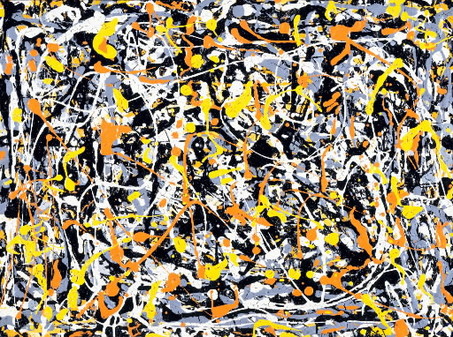It is expedient for us, that one man should die for the people
Sunday, March 11th, 2012[ by Charles Cameron — targeted killings, the one and the many, qualitative and quantitative approaches, statistics and analogy, sacrifice, rethinking thinking ]
.
.
Albrecht Durer, Christ before Caiaphas, from The Small Passion.
.
I seem to be clearing the decks with some scattershot smaller posts today, and will hopefully return to the matter of Esther, Bibi and Iran shortly – the sheer mass of interesting aspects there threatens to overwhelm me.
Here’s a brief note, from one religious angle, on the targeted killing on citizens who are found to threaten national security.
I would like to stress that as usual, my purpose in writing is to open up lines of thought, not to point to a particular conclusion: I see myself as a voice in conversation, not as a decider.
But there’s more than that. I am trying to rethink thinking – to define a way of coming at complex problems that’s polyhedral, polyphonic – because if there’s one property that’s common to the major problems we currently face, it’s that they are not linear, they are not single-sided, they are not black and white.
*
I laid out some preparatory thinking on the “openness” this requires in yet another post earlier today.
Another aspect of this rethinking would be the willingness to make extensive use of analogy — and analogical thinking, while extremely powerful, also carries with it its own particular risks — so I would like to repeat another caution that I have suggested before. If we are to engage the riches of juxtaposition and analogical thinking — to open up those “new avenues” on thorny problems — we need to be very clear that our use of such analogies by no means implies moral equivalence, any more than for those using statistics, correlations necessarily imply causation.
We need to make a precision tool of analogy — to sharpen its blade — with a clear recognition both of what it can accomplish, and of what safeguards it demands of us if we are to avoid its pitfalls.
*
Example:
In these times when the use of drones to kill targeted US citizens — and indeed presumed innocents such as the 16-year-old Abdulrahman al-Awlaki – is justified in the name of national security, the reason given by the High Priest for the death of Jesus in John’s Gospel bears reflection:
The context as given in John 11.47-53 is worth considering in full:
Then gathered the chief priests and the Pharisees a council, and said, What do we? for this man doeth many miracles. If we let him thus alone, all men will believe on him: and the Romans shall come and take away both our place and nation. And one of them, named Caiaphas, being the high priest that same year, said unto them, Ye know nothing at all, Nor consider that it is expedient for us, that one man should die for the people, and that the whole nation perish not. And this spake he not of himself: but being high priest that year, he prophesied that Jesus should die for that nation; And not for that nation only, but that also he should gather together in one the children of God that were scattered abroad. Then from that day forth they took counsel together for to put him to death.
There’s a lot going on there, isn’t there?
On the one hand, Caiaphas quite clearly views Jesus as a dangerous trouble-maker whose rabble-rousing threatens the entire Jewish people with destruction — and wants him eliminated.
But there’s also the way the gospel turns the tables on Caiaphas, and reworks his authorization of the killing of Jesus into an unwitting prophecy of the latter’s sacrificial self-offering for the redemption of all humankind.
That is also remarkable.
*
As I said above, my interest here is not in taking sides in the argument regarding drone strikes or targeted killings, but in opening up new avenues of thought – reminding us in this case that “one for many” arguments, pro and con, have been with us a long time.
And dare I suggest that the High Priest’s argument, together with the Evangelist’s skillful way of turning it on its head, offers us a stunning instance of how difficult it can be to reconcile qualitative with quantitative thinking — the interests of the one with those of the many? And perhaps too, that for an immortal deity (viewed now from within the faith perspective of Christianity) to make of himself a mortal sacrifice, could be an indicator of just how paradoxical that kind of difficulty really is?







